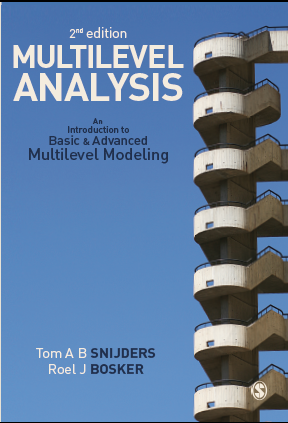Multilevel Analysis: An introduction to basic and advanced multilevel modeling,
written by Tom A.B. Snijders and Roel J. Bosker, appeared November 2011 at Sage Publishers.
The official publication year, however, is 2012.
The Sage announcement of this book is here, and here is the table of contents.
The book was totally updated compared to the first edition, with new chapters on missing data, survey weights in multilevel analysis, and miscellaneous methods (Bayesian estimation, sandwich standard errors, latent class models).
Each chapter (from 2 to 17) ends with a glommary, which is a combination of a glossary and a summary, giving the main terms and an overview of the chapter.
Here is a set of slides which can be used for teaching.
This webpage contains:
- Data sets used in the book.
- Macros / scripts that may be useful in general.
- Software setups for reproducing examples in the book.
- Additional remarks and references.
- Corrections.
